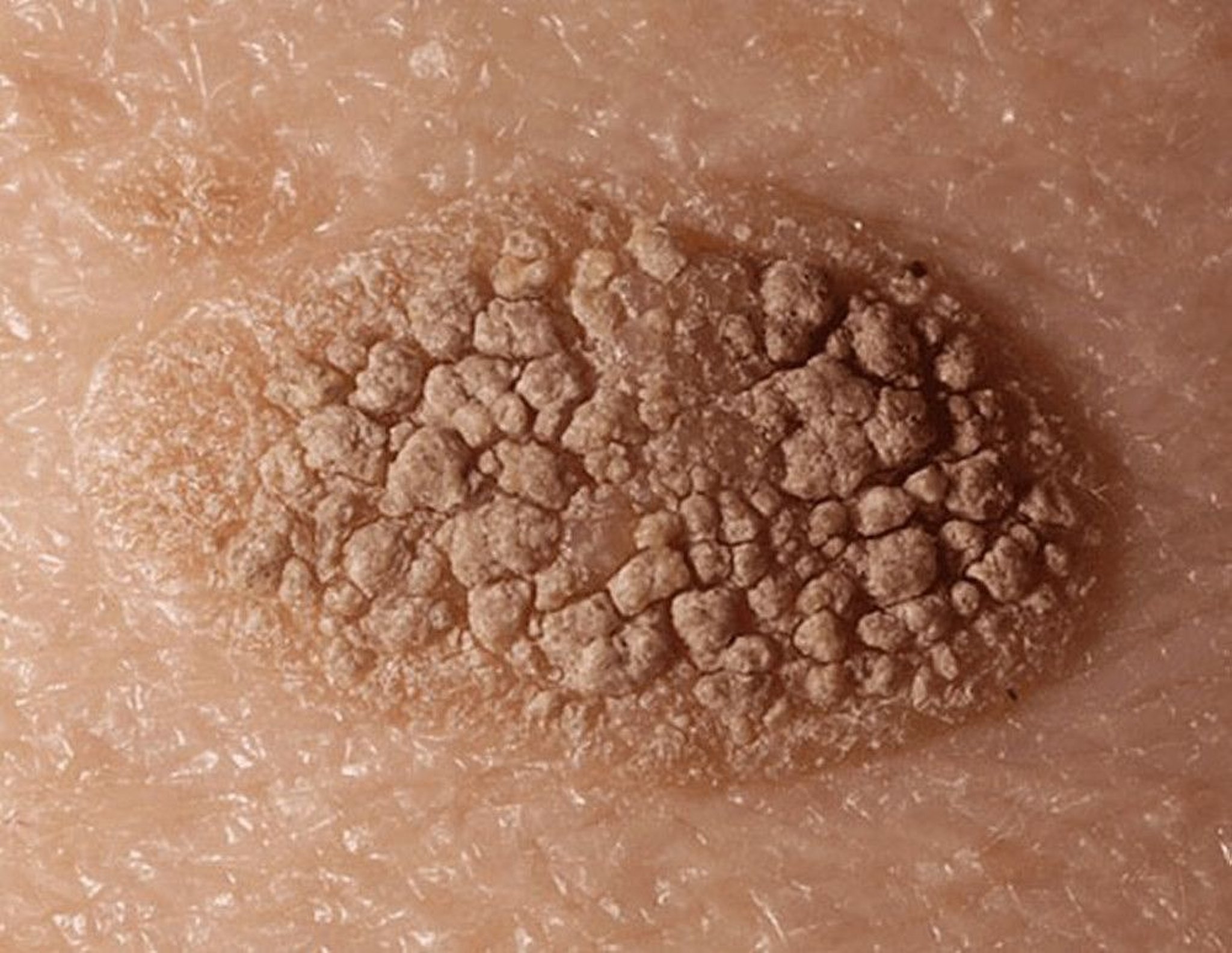Seborrheic keratoses (seborrheic warts) are usually warty and skin-colored, brown, or black growths that can appear anywhere on the skin.
(See also Overview of Skin Growths.)
The cause of seborrheic keratoses is unknown. Some people have an inherited tendency to develop seborrheic keratoses. These harmless growths are very common among middle-aged and older people. Some people have many growths. Although these growths can appear anywhere, they most often appear on the torso and the temples. In people with dark skin, a large number of these growths can occur on the cheekbones (a condition called dermatosis papulosa nigra).
Image provided by Thomas Habif, MD.
Seborrheic keratoses are round or oval and vary in size from less than ¼ inch (0.5 centimeters) to occasionally several inches. They appear to be stuck on the skin and usually have a warty and waxy or scaly surface. These growths develop slowly. They are not cancerous (malignant) and do not become cancerous. Dark brown keratoses with irregular pigment may sometimes be mistaken for atypical moles or melanomas.
Treatment of seborrheic keratoses is not needed unless the keratoses become irritated or itchy or are cosmetically undesirable. They are best removed by freezing them with liquid nitrogen (cryotherapy) or by using an electric needle (electrodesiccation).



